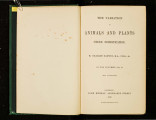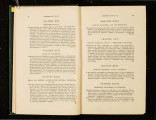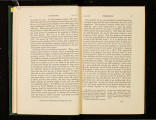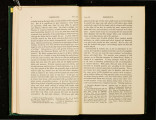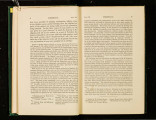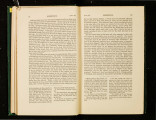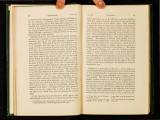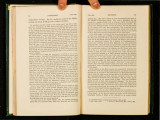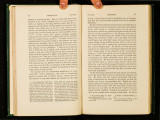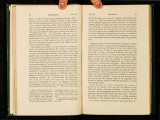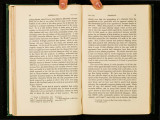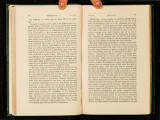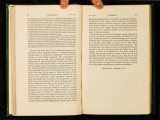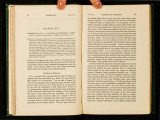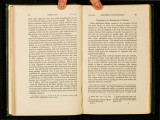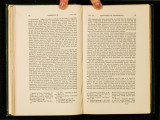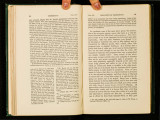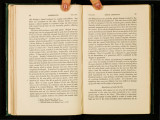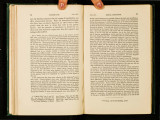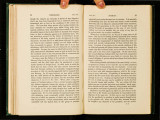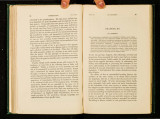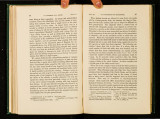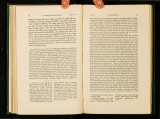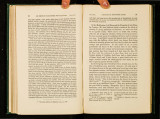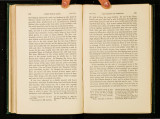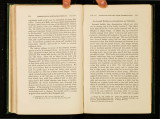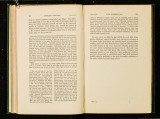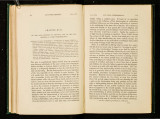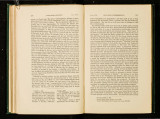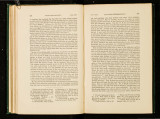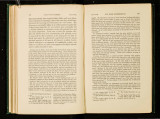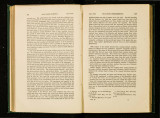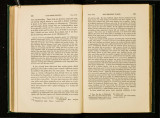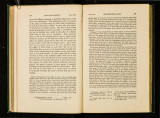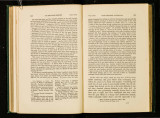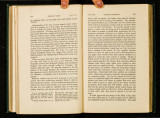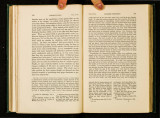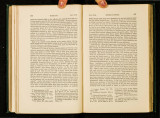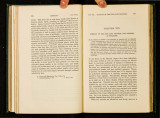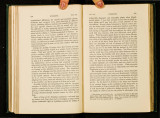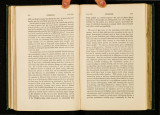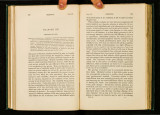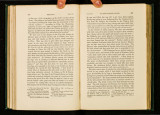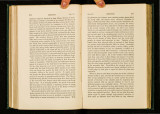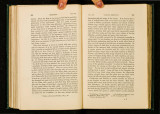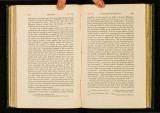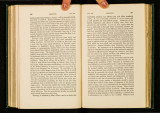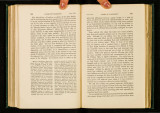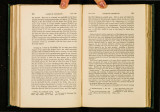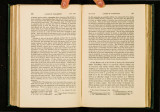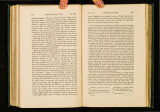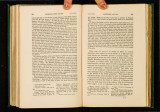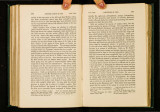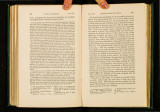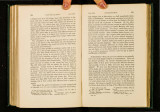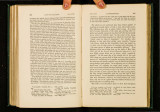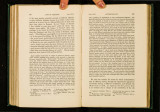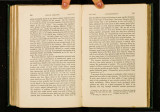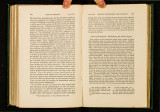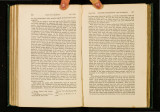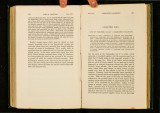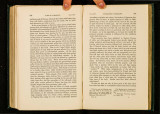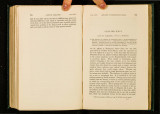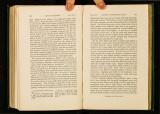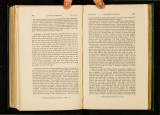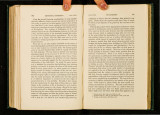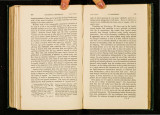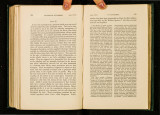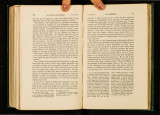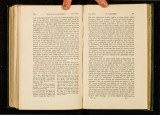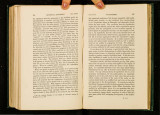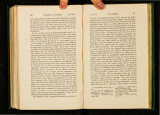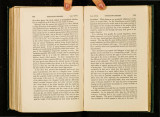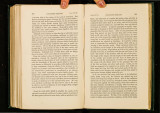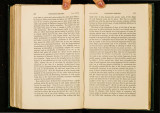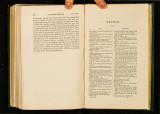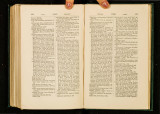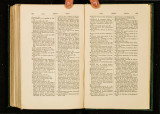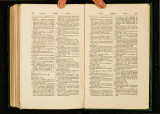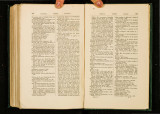| OCR Text |
Show 154 STERILITY FROM CHAP. XVIII. be little doubt that, if possible, they would have been propagated. In the Jardin des Plantes, no bird of prey has been known to couple.31 No hawk, vultme, or owl has ever produced fertile eggs in the Zoological Gardens, or in the old Smrey Gardens, with the exception, in the former place on one occasion, of a condor and a kite (Milvus niger). Yet several species, namely, the Aquila fusca, Hctliretus leucocephalus, Falco tinnunculus, F. subbuteo, and B~tteo vulgaris, have been seen to couple in the Zoological Gardens. Mr. Morris 32 mentions as a unique fact that a kestrel (Falco tinnunculus) bred in an aviary. The one kind of owl which has been known to couple in the Zoological Gardens was the Eagle Owl (Bubo maximus); and this species shows a special inclination to breed in captivity; for a pair at Arundel Castle, kept more nearly in a state of natme "than ever fell to the lot of an animal deprived of its liberty," 33 actually reared their young. Mr. Gumey has given another instance of this same owl breeding in confinement; and he records the case of a second species of owl, the Strix passerina, breeding in captivity.a4 Of the smaller graminivorous birds, many kinds have been kept tame in then· native countries, and have lived long; yet, as the highest authority on cage-bil'ds 35 remarks, their propagation is "uncommonly difficult." The canary-bn·d shows that there is no inherent difficulty in these birds breeding freely in confinement; and Audubon says 36 that the Fringilla (Spiza) ciris of North America breeds as perfectly as the canary. The difficulty with the many finches which have been kept in confinement is all the more remarkable as more than a dozen species could be named which hav~ yielded hybrids with the canary; but hardly any of these, with the exception of the siskin (Fringilla spinus), have reproduced then· own kind. Even the bullfinch (Loxia pyrrhula) has bred as frequently with th~ canary, though belonging to a distinct genus, as with its own species.37 With respect to the skylark (.Alauda arvensis), I have heard of birds living for seven _years ~ an aviary, which never produced young; and a great London bn·d-fanmer assmed me that he bad never known an instance of then· breeding; nevertheless one case has been recorded.38 In the nineyear Report from the Zoological Society, twenty-fom incessorial species are enumerated which had not bred, and of these only four were known to have coupled. ~arrots are singularly long-lived birds; and Humboldt mentions the curwus fact of a parrot in South America, which spoke the language of 31 F. Cuvier, 'Annal. du Museum ' tom. ix. p. 128. ' 32 ' The Zoologist,' vol. vii.-viii., 1849- 50, p. 2648. 33 Knox, ' Ornithological Rambles in Sussex,' p. 91. 34 'The Zoologist,' vol. vii.-viii., 1849- 50, p. 2566; vol. ix.-x ., 1851-2, p. 3207. 35 Bechstein, 'Naturgesch.der Stubenvogel,' 1840, s. 20. 36 'Ornithological Biography,' vol. v. p. 517. 87 A case is recorded in ''fbe Zoologist,' vol. i.-ii., 1R43-45, p. 453. For the siskin breeding, vol. iii.-iv., 1845-46, p. 1075. Bechstein, 'Stubenvogel,' s. 139, speaks of bullfinches making nests, but rarely producing young. 3~ Yarrell's 'Hist. British Birds,' 1839, vol. i. p. 412. CIIAP. XVIII. CHANGED CONDITIONS. 155 an extinct Indian tribe, so that this bird preserved the sole relic of a lost language. Even in this country there is reason to believe 39 that parrots have lived to the age of nearly one hundred years; yet, though many have been kept in Emope, they breed so rarely that the event has been thought worth recording in the gravest publications.40 According to Bechstein 41 the Afi·ican Psittacus erithacus breeds oftener than any other species: the P. macoa occasionally lays fertile eggs, but rarely succeeds in hatching them; this bird, however, has the instinct of incubation sometimes so strongly developed, that it will hatch the eggs of fowls or pigeons. In the Zoological Gardens and in the old Surrey Gardens some few species have coupled, but, with the exception of three species of parrakeets, none have bred. It is a much more remarkable fact that in Guiana parrots of two kinds, as I am informed by Sir R. Schomburgk, are often taken from the nests by the Indians and reared in large numbers; they are so tame that they fly freely about the houses, and come when called to be fed, like pigeons; yet he has never heard of a single instance of their breeding. 42 In Jamaica, a resident naturalist, Mr. R. Hill, 43 says, "no birds more readily " submit to human dependence than the parrot-tribe, but no instance of a " parrot breeding in this tame life has been known yet." 1\fr. Hill specifies a number of other native bn·ds kept tame in the West Indies, which never breed in this state. The great pigeon family offers a striking contrast with parrots: in the nine-year Report thil·teen species are recorded as having bred, and, what is more noticeable, only two were seen to couple without any result. Since the above date every annual Report gives many cases of various pigeons breeding. The two magnificent crowned pigeons ( Goura coronata and Victor-ire) produced hybrids; nevertheless, of the former species more than a dozen bn·ds were kept, as I am informed by Mr. Crawfurd, in a park at Penang, under a perfectly well-adapted climate, but never once bred. The Columba migmtoria in its native country, North America, invariably lays two eggs, but in Lord Derby's menagerie never more than one. The same fact has been observed with the 0. leucocephala.44 Gallinaceous bn·ds of many genera likewise show an eminent capacity for breeding under captivity. This is particularly the case with pheasants; yet om English species seldom lays more than ten eggs in confinement ; whilst from eighteen to twenty is the usual number in the wild state.45 With the Gallinacere, as with all other orders, there are marked and inex- 39 Loudon's 'Mag. of Nat. History; vol. ix., 1836, p. 347. 40 'l\1emoires du Museum d'Hist. Nat.,' tom. x. p. 314: five cases of parrots breeding in France are here recorded. See, also, ' Report Brit. Assoc. Zoolog.,' 1843. 41 'Stubenvogel,' s. 105, 83. 42 Dr. Hancock remarks ('Charlesworth's Mag. of Nat. Hist.,' vol. i1., 1838, p. 492), " it is singular that, amongst the numerous useful birds that are indigenous to Guiana, none are found to propagate among the Indians; yet the common fowl is reared in abundance throughout the country." 43 'A Week at Port Royal,' 1855, p. 7. 44 Audubon,' American Ornithology,' vol. v. pp. 552, 557. 45 Moubray on Poultry, 7th edit., p. 133. |





